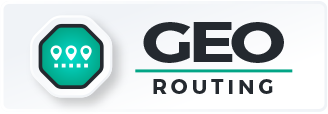- Blog
- Geo Routing
- How to Plan Thousands of Stops in Minutes (Not Hours)
Multi stop routing makes planning hundreds or thousands of stops fast and efficient. Planning routes for hundreds or thousands of stops manually is exhausting—and slow. If you’re exporting CSV files, dragging pin locations into Google Maps, or building routes in multiple spreadsheets, you’re wasting valuable time on tasks that software can automate. Bulk, multi-stop routing allows businesses to upload thousands of locations at once and generate optimized routes within minutes. Instead of guessing which driver should take which route, route optimization tools calculate mileage, capacity, priority, and time windows automatically.
In this guide, you’ll learn how to plan thousands of stops in minutes using Mapline’s bulk routing engine—and why tools like Google Maps or MapQuest aren’t designed for high-volume business routing.
Why Manual Routing Falls Short for Multi Stop Routing
Dragging locations into a route planner works when you’re planning a road trip. But when your business schedules daily deliveries, pickups, field service calls, installations, or maintenance stops, manual routing breaks. It introduces human error, wastes hours, and restricts how many stops you can reasonably schedule. Even tools like Google Maps limit you to a small number of stops per route, which forces dispatchers to split routes manually—a process that gets messy fast. Businesses need automation, not manual guesswork.
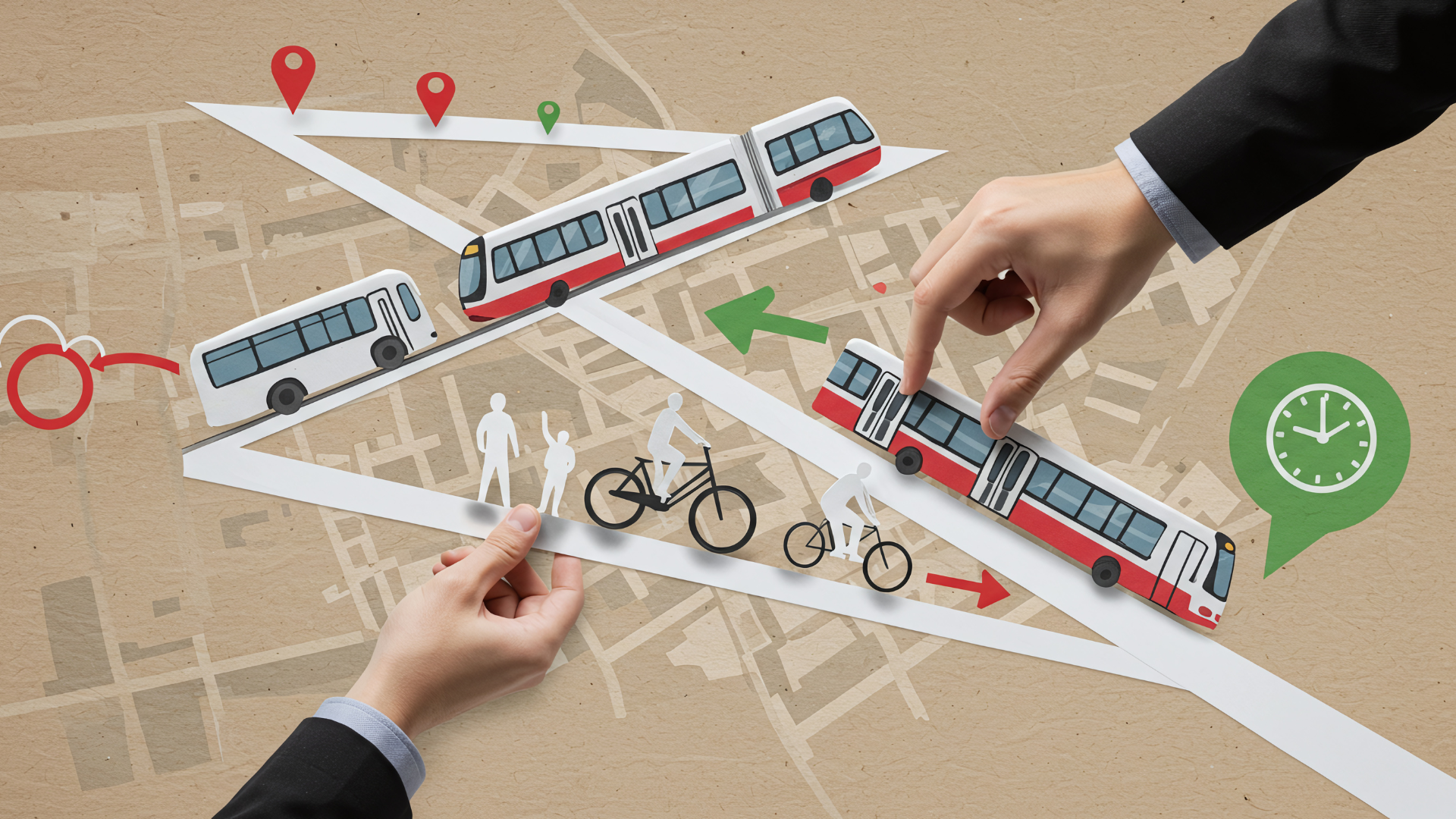

Pro Tip: Set a maximum drive time or maximum number of stops per route. Mapline will automatically prevent overloaded routes and balance the workload across your fleet.
The Hidden Cost of Manual Routing
Time lost to manual routing doesn’t just slow down dispatchers—it slows down revenue. Every unnecessary mile increases fuel costs and reduces how many appointments or deliveries your team can complete. Manual routing produces inconsistent results because it doesn’t evaluate constraints like drive time, customer availability, or vehicle capacity. The more complex your operations, the bigger the cost of doing routing by hand.

Manual Routing Forces Dispatchers to Guess Instead of Optimize
When dispatchers build routes manually, they rely on intuition rather than data. Without optimization logic, it’s nearly impossible to evaluate all variables—drive time, service windows, capacity, driver availability, and regional density—at the same time. That’s why manual routing often results in crisscrossing routes, overloaded days for certain drivers, and underutilized vehicles on others. Routing shouldn’t rely on gut decisions; it should be driven by data. Automated routing platforms eliminate guesswork and ensure every stop lands on the most efficient route possible.

Why Google Maps Isn’t Built for High-Volume Business Routing
Google Maps is built for navigation—not route planning at scale. It’s great for individuals planning personal trips, but it lacks the logic required to sequence and assign thousands of business stops. Google Maps limits how many locations can be added to a single route, doesn’t support bulk uploads, and has no optimization engine for balancing multiple drivers or vehicles. Businesses need routing logic that considers constraints—not just directions.
Google Maps vs. Mapline: The Key Difference
Google Maps tells you how to get somewhere. Mapline tells you the best way to get everywhere. With Mapline, users upload thousands of stops in a spreadsheet, and routes are automatically optimized based on time windows, delivery priorities, vehicle limits, or technician skills. What takes hours in Google Maps takes minutes in Mapline.
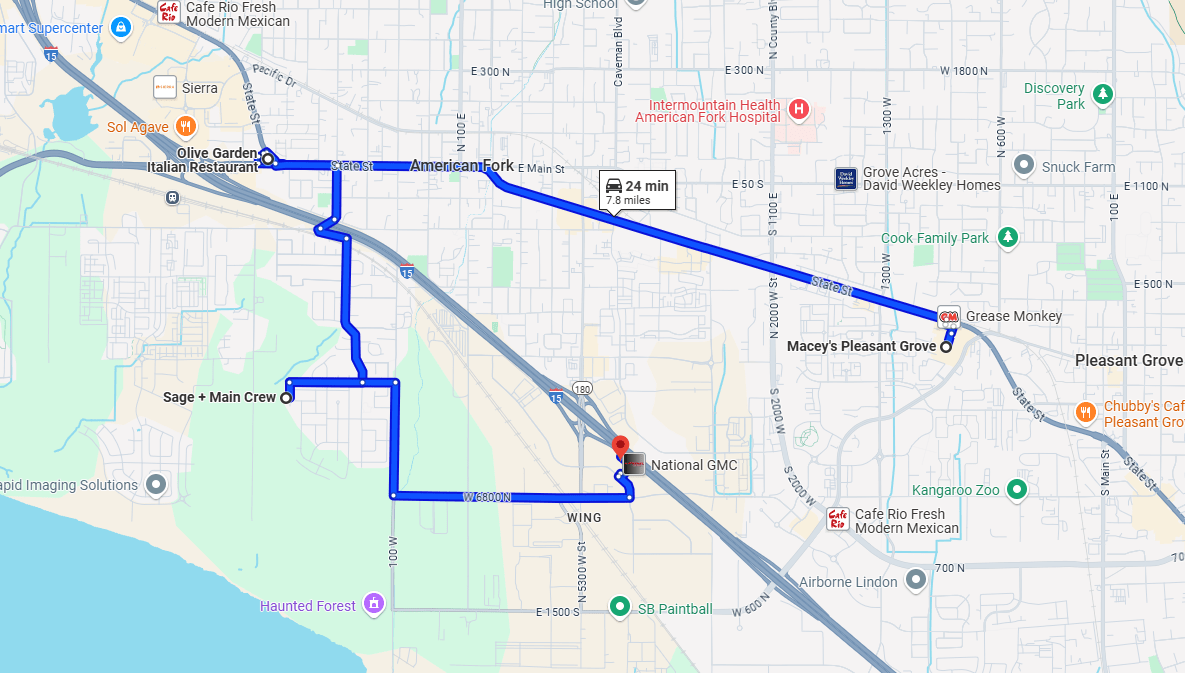
Google Maps Can’t Balance Routes Across Multiple Drivers or Vehicles
Google Maps can display directions, but it cannot distribute workloads across multiple drivers or balance routes based on business constraints. Businesses need to plan for capacity, technician skill, time windows, and priority—Google Maps doesn’t consider any of these inputs. If you tried to use it to plan 300 delivery stops, you’d be forced to create multiple maps manually and assign routes one driver at a time. That results in guesswork, not optimization. Mapline automatically splits stops across unlimited vehicles and builds balanced, efficient routes in minutes.
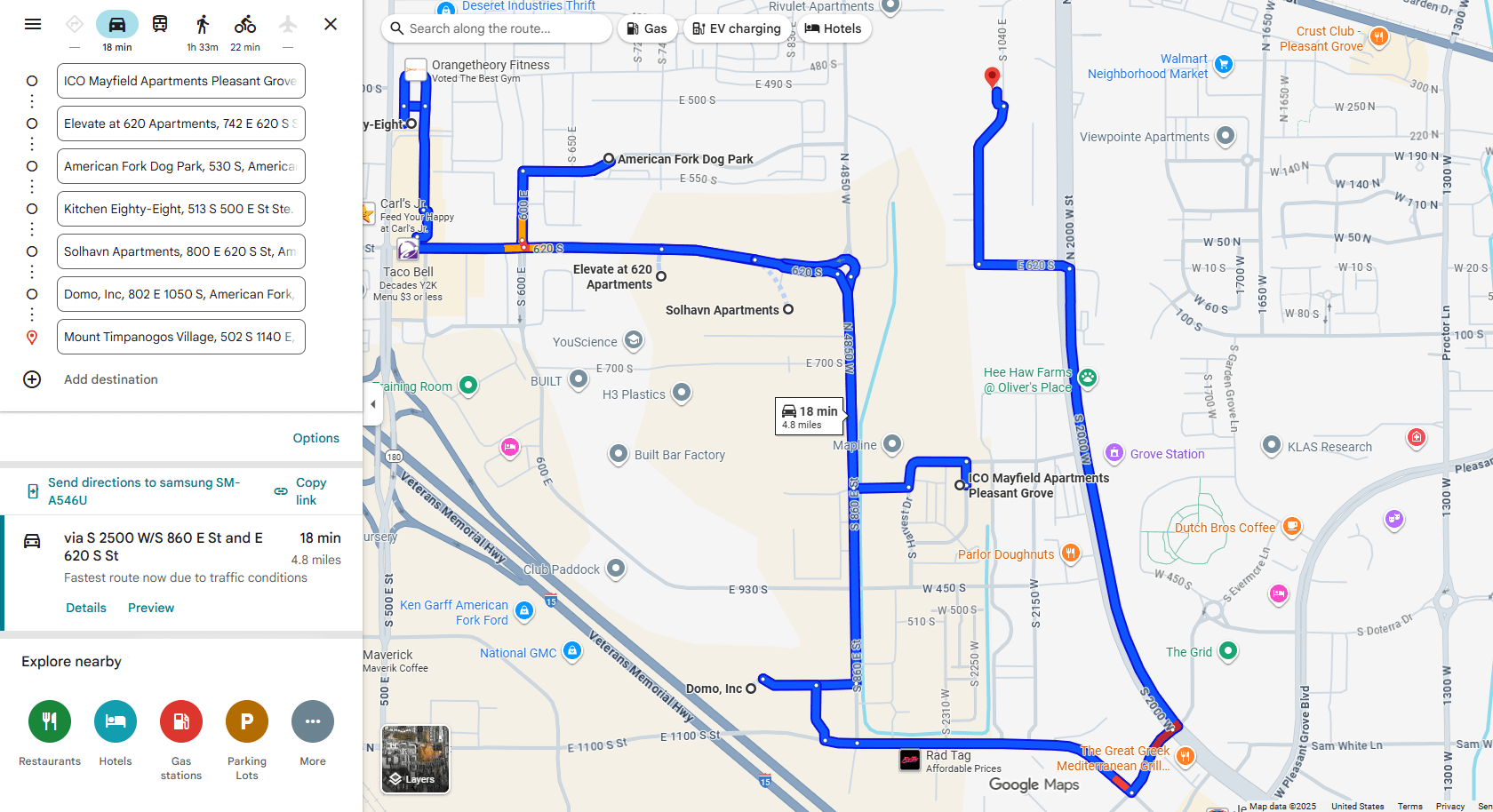
How Multi Stop Routing Works in Mapline
With Mapline’s bulk routing engine, users upload a spreadsheet of locations and Mapline automatically separates the stops into efficient routes. Each route is optimized based on priority, constraints, and the logic you define. The goal is simple: fewer miles, fewer hours, more completed stops. No human drag-and-drop required.
Step 1: Upload Your Spreadsheet
Upload thousands of locations from Excel or Google Sheets. Mapline geocodes them automatically and plots them on the map—even if your addresses aren’t perfect. You can include custom columns like priority, delivery window, stop type, or required vehicle equipment.

Step 2: Choose Routing Constraints
Select the criteria that matter: time windows, priority stops, vehicle availability, technician skill, or delivery quantity. Mapline applies your routing rules automatically.
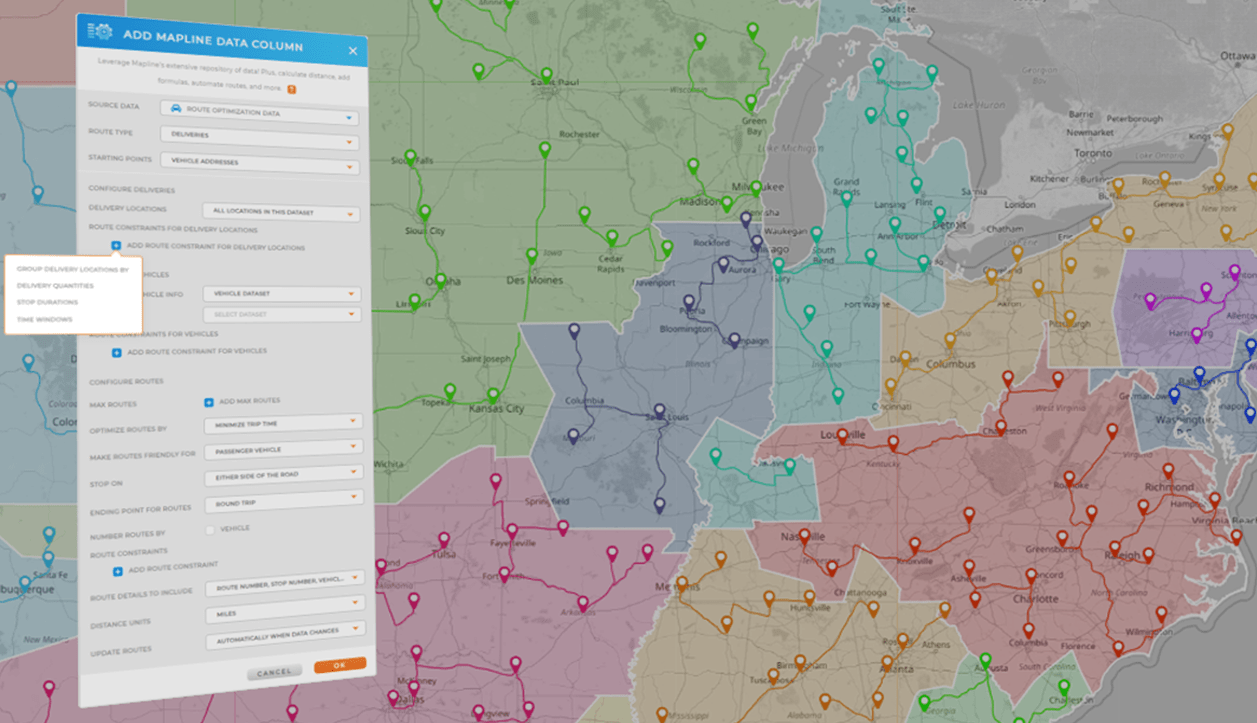
Step 3: Auto-Generate Routes
Mapline processes all stops and assigns them to optimized routes in minutes, not hours. Each vehicle gets a route that balances distance, capacity, and time. No manual sequencing required.
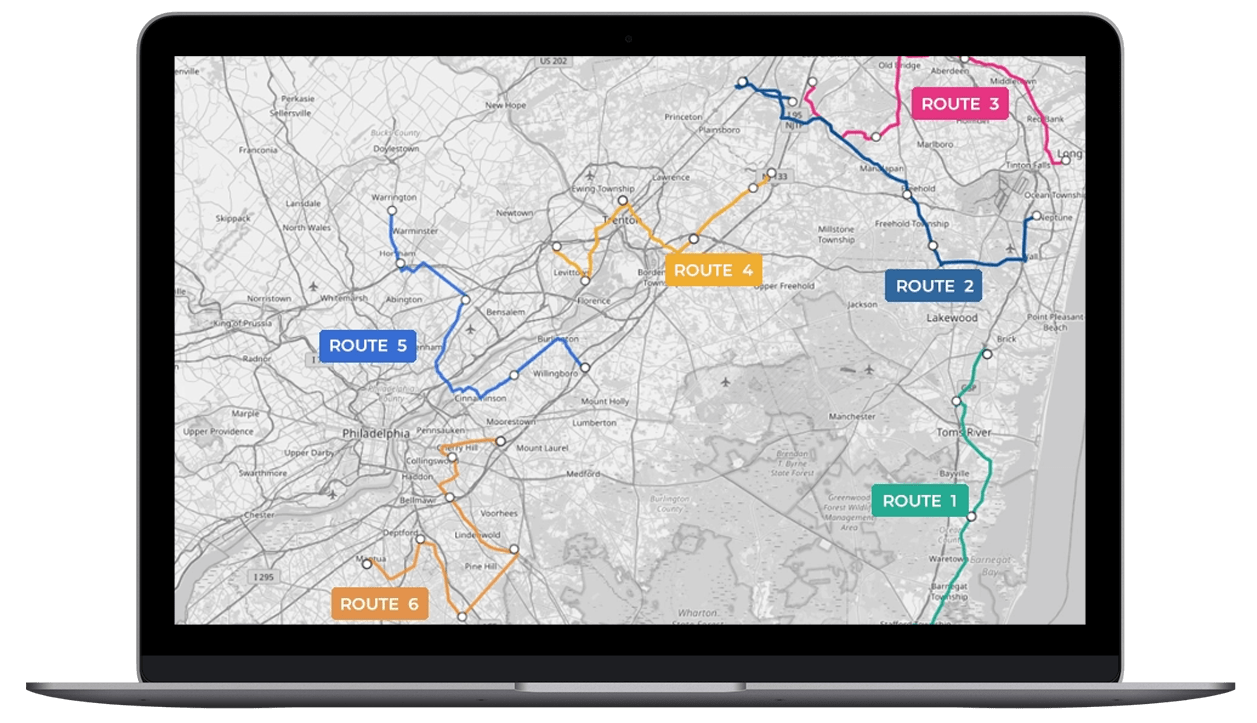
Step 4: Dispatch or Export
You can export the routes or send them directly to drivers. They’ll get a link with turn-by-turn navigation from their mobile device. Drivers don’t need a Mapline account to receive routes.
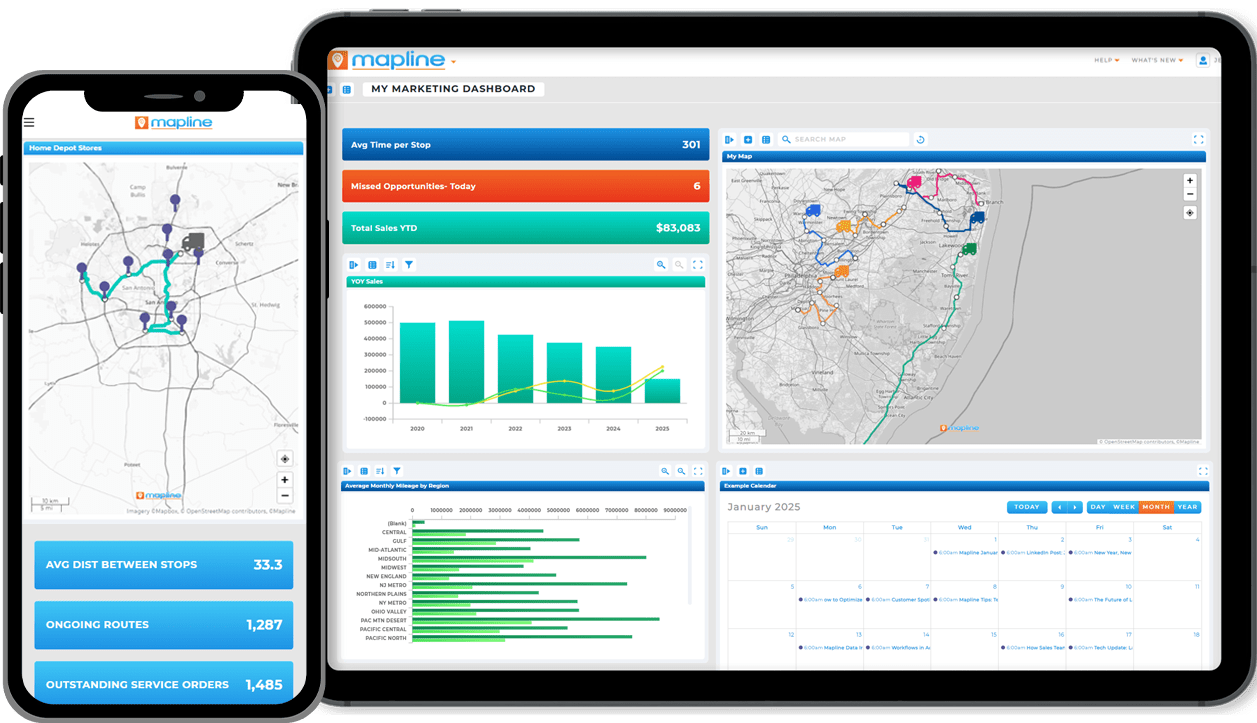
Key Advantages of Multi-Stop Routing in Mapline
Bulk routing isn’t just about speed—it’s about efficiency. When your routing platform handles sequencing and assignments, your team focuses on completing the work instead of planning it. Mapline ensures the right vehicle and driver are assigned to the right route based on real constraints.
Auto-Assignment for Multi Stop Routing Across Unlimited Vehicles
Whether you’re routing five trucks or 500, Mapline distributes stops automatically. No more splitting routes by hand to match your fleet’s capacity.
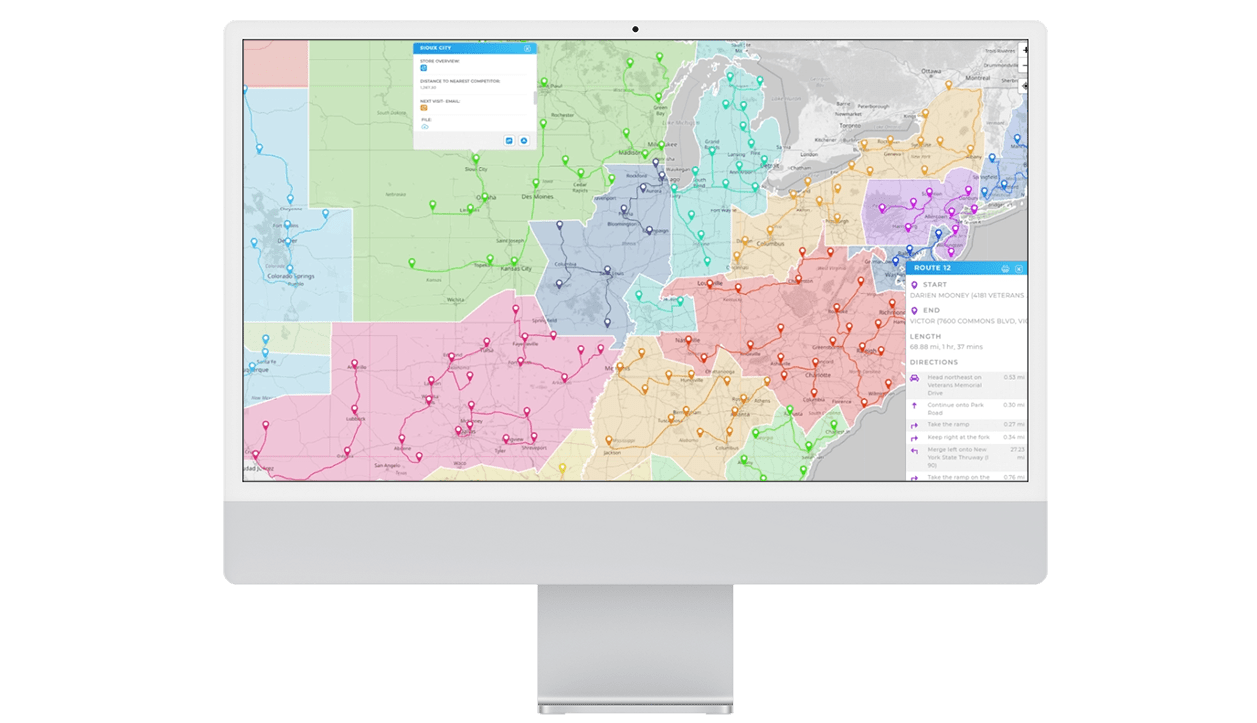
Consider Customer Time Windows in Multi Stop Routing
Mapline respects delivery or appointment windows, preventing unrealistic expectations or callback costs.

Handle Complex Inputs for Multi Stop Routing
You can include vehicle capacity, technician skill, delivery type, or stop duration. Mapline optimizes it all simultaneously.
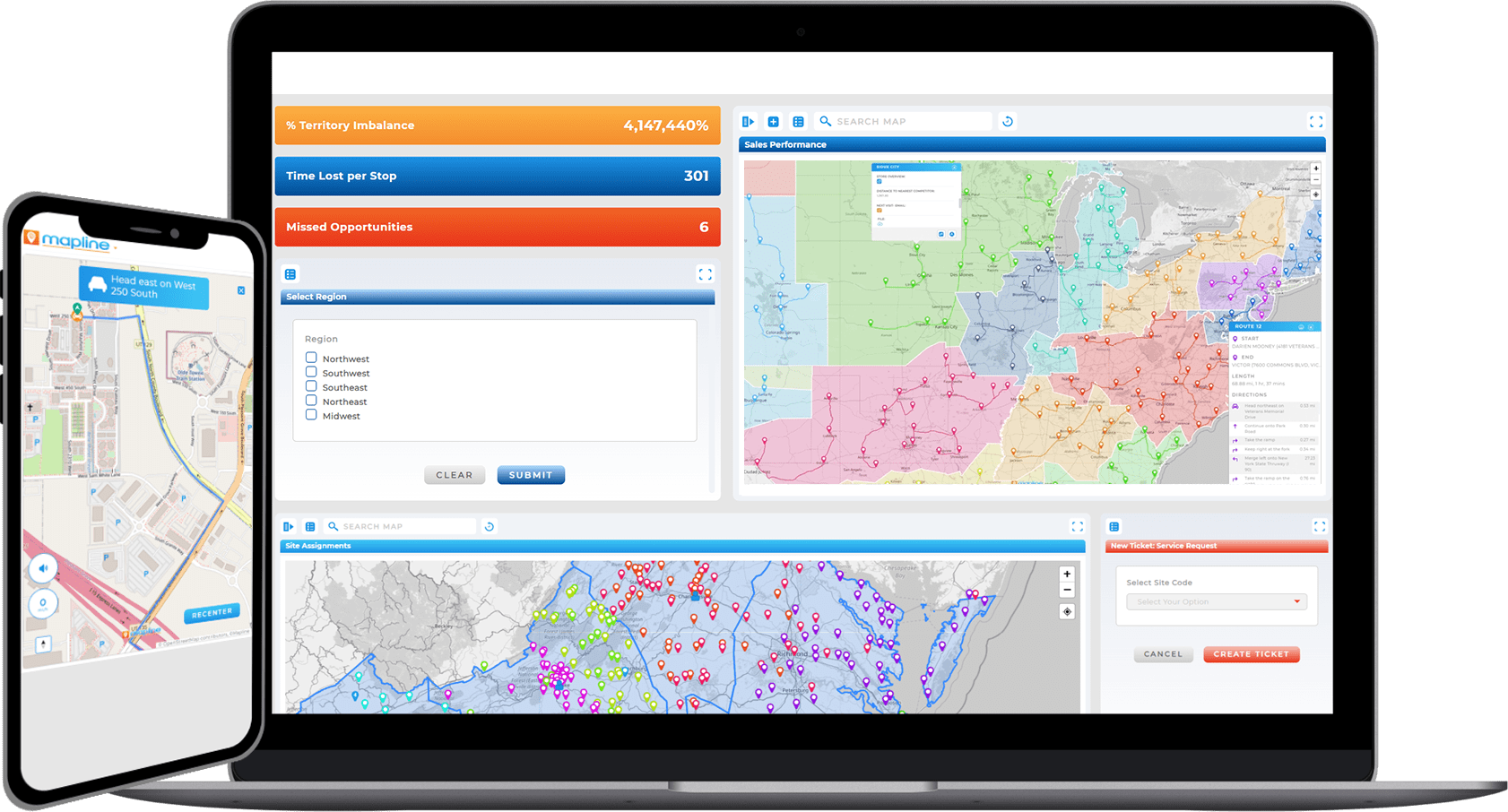
Real-World Industries That Save Hours With Multi Stop Routing
Multi-stop routing applies to far more than deliveries. Any business sending teams or vehicles into the field benefits from automated route planning. Field operations improve efficiency when routes account for geography, constraints, and work duration—not just mileage.
Delivery & Distribution Multi Stop Routing
Optimize delivery routes based on priority, vehicle load capacity, and customer windows.

Field Service & Installation
Assign technicians based on skill and location, and reduce drive time between jobs.

Maintenance & Inspections
Route inspectors to multiple sites efficiently and eliminate manual scheduling spreadsheets.

Thousands. Mapline is built for large datasets and bulk routing.
No. Routes can be exported or sent directly to drivers via link.
Yes. All of these can be included as routing variables.
Google Maps gives directions. Mapline builds optimized multi-stop routes based on business constraints.







